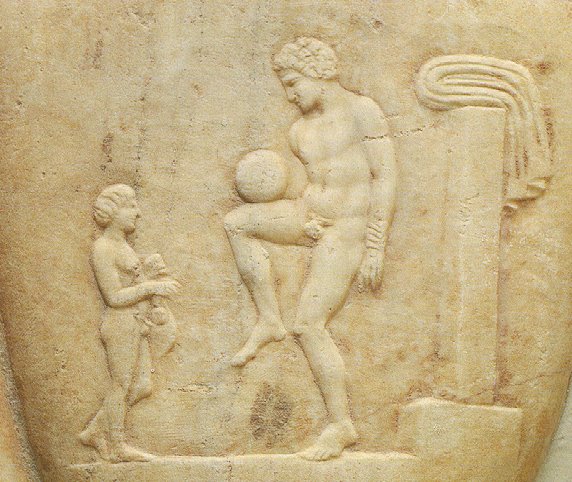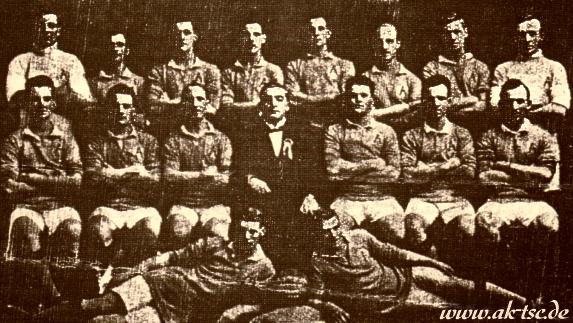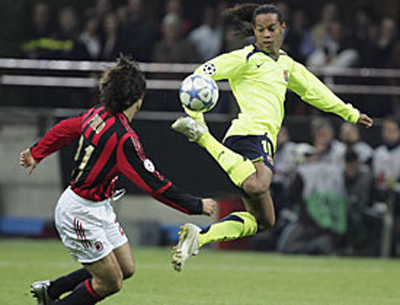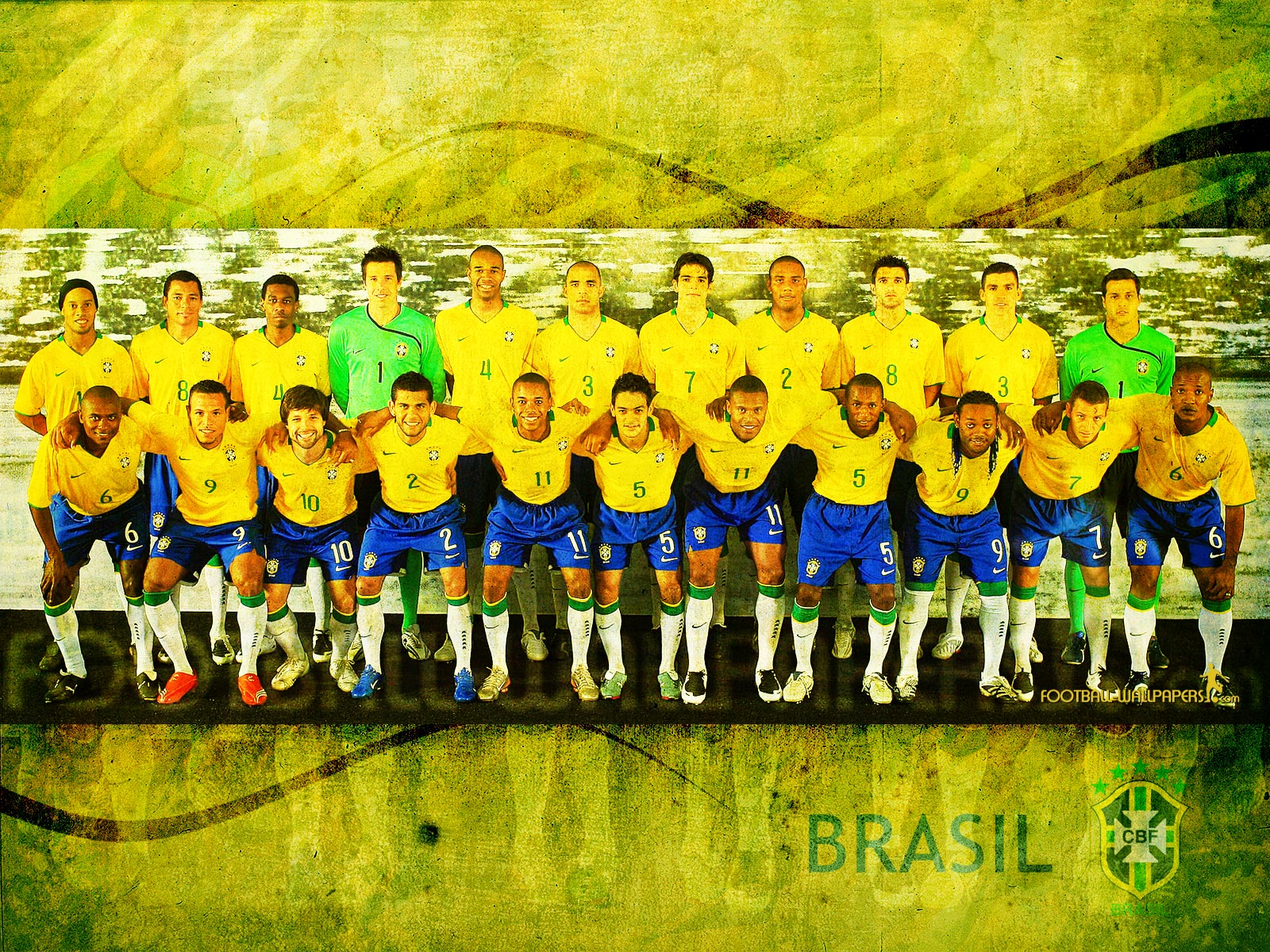

From FUTBOL THEN
(Go to bottom of page to see soccer today)
Welcome to the History of Soccer!!!
One of the earliest forms of soccer in which players kicked a ball around on a small field has been traced as far back to 1004 B.C. in Japan. The Munich Ethnological Museum in Germany has a Chinese text from approximately 50 B.C. that mentions games very similar to soccer that were played between teams from Japan and China. The Chinese kicked a leather ball ( hair-filled ) and it is known with certainty that a soccer game was played in 611 A.D. in the then Japanese capital, Kyoto.
In King Edward's reign of England (1307-1327), laws were passed that threatened imprisonment to anyone caught playing soccer. King Edward's proclamation said:" For as much as there is a great noise in the city caused by hustling over large balls, from which many evils may arise, which God forbid, we command and forbid on behalf of the King, on pain of imprisonment, such game to be used in the city future."
Evidently judged to be vulgar and indecent, soccer was at times suppressed by the English sheriffs who followed royal orders describing the game as a useless practice. King Henry IV and Henry VIII passed laws against the sport, and Queen Elizabeth I "had soccer players jailed for a week, with follow-up church penance"
Laws, however, failed to stop the sport, which had earned official sanction in England by 1681. The game became so popular by 1800s that, in certain annual contests in northern and middle England, large groups roamed and raged through towns and villages. In 1829, an account of such match in Derbyshire spoke of "broken skins, broken heads, torn coats and lost hats."
A record of the development of soccer in England shows that Eton college had the earliest known rules of the game in 1815, perhaps implying that until then, chaos was preferred over order. But order gradually came to the game, and standardized rules known as the Cambridge rules were adopted by England's major colleges.
At 1st, it was England where soccer was originally banned, that eventually exported modern soccer to every continent in the world. today, undisputedly soccer is the most watched and played sport in the world enjoyed by 8 million people. This past World cup, that took place in the united States was watched by an estimated 33 million people around the world for almost 27 days. This makes soccer, the most watched single sports event in the world not surpassed even by the Olympics. This sport is bigger than baseball, football and basketball combined.
Wiki Answers
Games revolving around the kicking of a ball have been played in many countries throughout history. According to FIFA, the "very earliest form of the game for which there is scientific evidence was an exercise of precisely this skilful technique dating back to the 2nd and 3rd centuries BC in China (the game of cuju)."[11] Various forms of football were played in medieval Europe, though rules varied greatly by both period and location.
The modern rules of football are based on the mid-19th century efforts to standardise the widely varying forms of football played at the public schools of England.
The Cambridge Rules, first drawn up at Cambridge University in 1848, were particularly influential in the development of subsequent codes, including association football. The Cambridge Rules were written at Trinity College, Cambridge, at a meeting attended by representatives from Eton, Harrow, Rugby, Winchester and Shrewsbury schools. They were not universally adopted. During the 1850s, many clubs unconnected to schools or universities were formed throughout the English-speaking world, to play various forms of football. Some came up with their own distinct codes of rules, most notably the Sheffield Football Club, formed by former public school pupils in 1857,[12] which led to formation of a Sheffield FA in 1867. In 1862, John Charles Thring of Uppingham School also devised an influential set of rules.[13]
These ongoing efforts contributed to the formation of The Football Association (The FA) in 1863, which first met on the morning of 26 October 1863 at the Freemason's Tavern in Great Queen Street, London.[14] The only school to be represented on this occasion was Charterhouse. The Freemason's Tavern was the setting for five more meetings between October and December, which eventually produced the first comprehensive set of rules. At the final meeting, the first FA treasurer, the representative from Blackheath, withdrew his club from the FA over the removal of two draft rules at the previous meeting, the first which allowed for the running with the ball in hand and the second, obstructing such a run by hacking (kicking an opponent in the shins), tripping and holding. Other English rugby football clubs followed this lead and did not join the FA, or subsequently left the FA and instead in 1871 formed the Rugby Football Union. The eleven remaining clubs, under the charge of Ebenezer Cobb Morley, went on to ratify the original thirteen laws of the game.[14] These rules included handling of the ball by "marks" and the lack of a crossbar, rules which made it remarkably similar to Victorian rules football being developed at that time in Australia. The Sheffield FA played by its own rules until the 1870s with the FA absorbing some of its rules until there was little difference between the games.
The laws of the game are currently determined by the International Football Association Board (IFAB). The Board was formed in 1886[15] after a meeting in Manchester of The Football Association, the Scottish Football Association, the Football Association of Wales, and the Irish Football Association. The world's oldest football competition is the FA Cup, which was founded by C. W. Alcock and has been contested by English teams since 1872. The first official international football match took place in 1872 between Scotland and England in Glasgow, again at the instigation of C. W. Alcock. England is home to the world's first football league, which was founded in Birmingham in 1888 by Aston Villa director William McGregor.[16] The original format contained 12 clubs from the Midlands and the North of England. The Fédération Internationale de Football Association (FIFA), the international football body, was formed in Paris in 1904 and declared that they would adhere to Laws of the Game of the Football Association.[17] The growing popularity of the international game led to the admittance of FIFA representatives to the International Football Association Board in 1913. The board currently consists of four representatives from FIFA and one representative from each of the four British associations.
Today, football is played at a professional level all over the world. Millions of people regularly go to football stadiums to follow their favourite teams,[18] while billions more watch the game on television.[19] A very large number of people also play football at an amateur level. According to a survey conducted by FIFA published in 2001, over 240 million people from more than 200 countries regularly play football.[20] Its simple rules and minimal equipment requirements have no doubt aided its spread and growth in popularity.
In many parts of the world football evokes great passions and plays an important role in the life of individual fans, local communities, and even nations; it is therefore often claimed to be the most popular sport in the world. ESPN has spread the claim that the Côte d'Ivoire national football team helped secure a truce to the nation's civil war in 2005. By contrast, football is widely considered to be the final proximate cause in the Football War in June 1969 between El Salvador and Honduras.[21] The sport also exacerbated tensions at the beginning of the Yugoslav wars of the 1990s, when a match between Dinamo Zagreb and Red Star Belgrade devolved into rioting in March 1990.[22]
Soccer Background
There is not just one theory as to wear soccer came from. The history of soccer is a very interwoven tangle of different threads that have come to make up what we call soccer, today. It is certainly not solely the English who invented the sport; although, many people do credit the English with the great feat.
Back in 200 b.c. in China, a form of soccer was played – players would dribble a leather ball. This is perhaps the earliest evidence of soccer. Greeks and Romans also played a sort of soccer – a sort of soccer in which you could actually carry the ball and have teams of 27 players. Kyoto, Japan has also left evidence of a field marked out to play a ball-kicking game.
Soccer as we know it today, though, can be greatly credited to England. One popular story goes that the first ball was the head of a dead Danish brigand! Trying to describe where soccer came from can be more confusing than describing to a child where babies come from – there is not a simple answer. Of course, with soccer, there are certainly more than just two countries that gave birth to the game as we know it today.
Some form of soccer, or rather, a ball-kicking game, have been played at least somewhere at some time on the planet for 3000 years. Soccer has even been strong enough to withstand laws forbidding soccer set forth by both English royalty King Edward III and later Queen Elizabeth and Scottish King James I. No law could stop the history of soccer from evolving… the game of soccer was just too popular.
Official rules were set in England a few times during the 1800s. Different sets of rules varied the game a bit, but the official rules that we still use today were set in 1869 by the English Football Association. These rules included a rule that forbade the handling of the ball.
Where did the name “soccer” come from? Well, under the national Football Association in England, and sort of soccer played under its jurisdiction was called association football. As time passed, people tended to abbreviate the ward “association” into “assoc.” which eventually led to the word “soccer.” Of course, most of the world still calls soccer “football,” it is mostly just in North America that the sport is known by the name of “soccer.”
There is much more to the history of soccer than what is listed here, of course. Soccer was played in the Western world as well. As you can see from this small taste, though, the history of soccer is very rich and wide-spanning.
Soccer's Timeline
1930's
Crucial years in the formation of soccer due to the premiere of the World Cup and the beginning of the professional phase in many countries of Latin America.
1930: Uruguay
First World Cup takes place. The host wins the final by two goals against the Argentinean team.
1931: A New Phase
The professional soccer era starts in Argentina, Uruguay and Chile.
1934: Italy
Italy wins its first title after a peculiar final with 30 overtime minutes.
1938: France
Italy wins its second Cup, surpassing Uruguay's record.
1940's
Although the World War interrupted the World Cup indefinitely, the American countries made up for it by playing in local cups and transferring players to continue the evolutionary cycle of soccer in the region.
1940: La Bombonera
The Xeneise Club opens it's stadium.
1943: Mexicos Turn
The professional cycle starts for this Central American country.
1948: Colombia
The end of amateur soccer.
1950's
After the War, the World Cup returns to it's regular pace. In Latin America, opportunities for a new championship come along and amazing stars like Pele are born.
1950: Brazil
After 12 years without World Cups, Uruguay wins the final before 200 thousand Brazilians in the Macarana stadium.
1954: Switzerland
The World Cup won by Germany was the first one with a sponsor.
1958: Sweden
Brazil wins the World Cup with players such as Pele and Garrincha and Brazil becomes the unstoppable team.
1959: The Cup Comes Home
The South American Confederation of Soccer approves a project to have a new interclub cup.
1960's
The World Cups receive a record in participations and begin to be aired on television. South America keeps growing: The Libertadores Cup is born and a new cup is created along with Europe in which the champions of each continent compete.
1960: Two New Competitions
The Libertadores Cup is played for the first time. Additionally, the Real Madrid wins against the Uruguayan team Peñarol in the Intercontinental Cup.
1962: Chile
The World Cup received the most number of entries and for the first time, the fans could watch the victory of Brazil in black and white.
1966: England
England wins at home and the Mexican goalkeeper, Antonio Caravajal sets a record for the most participation in World Cups.
1970's
The countries “support” their teams to deviate the attention from issues such as poverty and violence.
1970: Mexico
Brazil wins the last Jules Rimet cup and becomes the country with the most championships won.
1974: Germany
A Haitian is punished for being the first player to test positive for doping. The championship is won by the local team and the fans could watch the games in color television.
1975: The Team of the Decade
Independiente de Avellaneda wins the Libertadores Cup for the fourth time.
1978: Argentina
Even though everyone was counting on Holland to win, Argentina won the first place while being under a bloody military regime.
1979: Paraguays Year
The country wins a Copa America and Olimpia wins the Libertadores and Intercontinental cups.
1980's
The international cups are like shops where you can buy talent. Such is the case of Diego Armando Maradona, who conquers the World Cup and gains attention worldwide.
1982: Spain
The cup united countries from all continents and accumulated the most goals scored. Italy won the final.
1984: The God Goes to Naples
The new phenomenon, Diego Armando Maradona, is transferred to the Italian team of Naples, which he made champions later.
1986: Mexico
Argentina wins its second World Cup after Maradona scored the most amazing goal in the history of soccer.
1990's
Brazil keeps demonstrating why it is the team with the most World Cups won. In Latin America, Mexico is included in the South American cups and the players prepare themselves for a more strategic and demanding soccer.
1990: Italy
After losing the last two World Cups, Germany finally wins first place.
1994: USA
Brazil wins another Cup for its collection after promising it to car racer Aurton Senna.
1998: France
The local team won last World Cup of the century.
1999: This One is for Mexico
The Aztec country wins the first place in the Confederaciones Cup.
2000's
Even though world soccer has become more conservative and drawn by effectiveness, a new class of exceptional players is born that breaks the schemes and justifies the millions invested.
2002: Korea-Japan
With a huge advantage on the number of Cups won, Brazil triumphs once more in the first World Cup played in more than one country.
2005: Confederations Cup
Brazil wins the final, becoming the favorite team for the next World Cup.
2005: Youth World Cup in Holland
The Argentinean team selected from the sub 20 category wins the cup and Messi wins the Gold Cleats
2005: Here Comes Germany
The countries are still battling each other in the preliminaries to see who makes it to the World Cup and people are hoping for a great championship that features players of unbelievable ability, such as Ronaldinho Gaucho and Juan Roman Riquelme.


To SOCCER NOW.